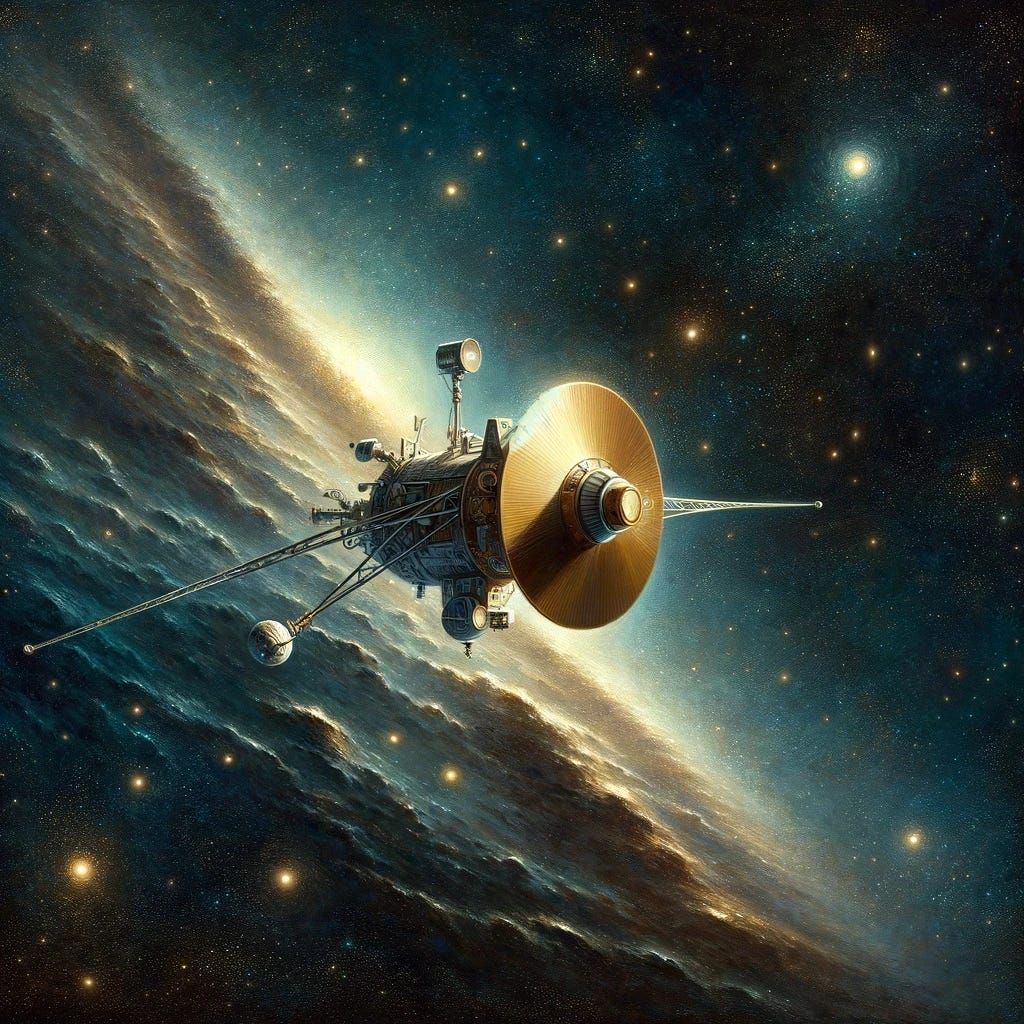Somewhere at the edge of interstellar space, a spacecraft we built five decades ago is moving faster than nearly anything else human beings have ever built.
If you looked for it with the most powerful telescopes ever made, you wouldn’t be able to see it. It’s just way, way too far away.
I’ve written about driving to the Moon and Sun before, and specifically how it would take about 100 years driving at 70 miles per hour (nonstop, no less) to get from the earth to the Sun. Scientists came up with a name for this distance—the Astronomical Unit, or AU for short.
The aptly named Voyager is currently 162 AUs away from us. By my math, if Voyager somehow stopped in its tracks right now, I could get there in about 17,000 years by driving. There was a second Voyager, too, so we refer to this particular Voyager as “Voyager 1.”
Not very creative, I’m afraid.
Along with the incredibly important array of sensory equipment, some of which is (incredibly) still functioning today, there is something els…
Keep reading with a 7-day free trial
Subscribe to Goatfury Writes to keep reading this post and get 7 days of free access to the full post archives.




